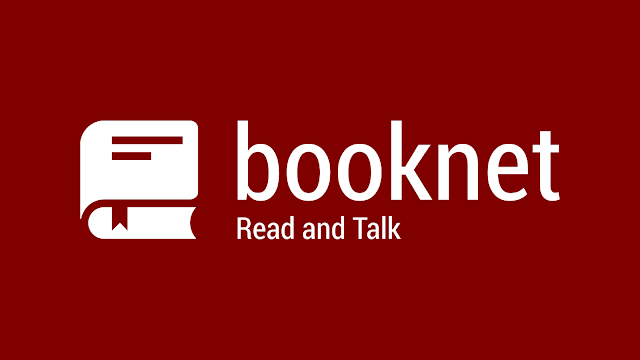In conversation with... Jane Rusbridge
 Hello Jane! First of all, I would like to congratulate you on the publication of your latest novel, The Devil’s Music. Can you please tell us what it is about?
Hello Jane! First of all, I would like to congratulate you on the publication of your latest novel, The Devil’s Music. Can you please tell us what it is about?A: Thank you, Silvia, and hello!
The Devil’s Music explores what happens to a family faced with the dilemma of what to do when the youngest child, Elaine, is born in the late 50s with severe disabilities, which means she is destined to remain mute and as helpless as a baby. For me, the novel is about family secrets, the way they influence the dynamics of family life and the psychological development of a child. It’s also about post traumatic stress disorder, the shifting unreliability of memory, mothers who leave their children...
The book opens with a glossary of knots and these – together with the antics of Harry Houdini – are a focal point of the novel. Are you an expert of knot tying? What did you want them to represent?
A: I’m definitely not an expert. A Reef Knot is about my limit, but I do have a copy of The Clifford Ashley Book of Knots, well-thumbed and filled with post-it notes from all the hours I spent researching for TDM.
The knots were central to the novel’s content right from the beginning, when I came across the case study of a little boy while in the library looking for something else. The study was written by child psychologist D.W. Winnicott, who describes the boy as having a ‘preoccupation’ with knots which could become a ‘perversion’. After reading the case study I kept seeing, in my mind’s eye, a little boy sitting with a ball of string on his lap in a room where he has tied everything together – cushions and chair legs, the door handle, coal shovel, lamp stand. This boy haunted me. I needed to find out why knots might hold enormous significance for a child, and decided it could be related to both a desire to escape (hence the Houdini connection) and a desire for security.
Trying to find the best fit between form and content was important to me as well, which is why the novel is structured like rope, with narrative strands separating and coming together, occasionally even entangling on a page, as do the characters’ relationships. The knots heading up the chapters in place of the characters’ names were chosen to suggest something of the personality, or story, of the character they represent.
The Devil’s Music is an intriguing title. Did it come before or after the novel? Or perhaps it changed while the novel itself took form?
A: For a long time the novel was called Left Over Right and Under, which I was quite happy with but, just before I was about to send it out to agents, two or three people whose views I respected said the title didn’t work for them. I had a major rethink. Something I often suggest to students stuck for a title for their short stories is to go through and underline any words or associated phrases which leap out, so I did the same, taking just the pivotal scene of the novel – the scene where Andy is left in charge of his baby sister Elaine on the beach. It was clear to me almost immediately that ‘the Devil’s music’ – which is whistling, in this case – was the phrase to use.
Did you have the plot entirely figured out when you started writing or did it develop before your eyes as the characters grew on the page and did something that you were not expecting?
A: Though I plot carefully at various stages of redrafting, I rarely know where the story is going to take me when I start out. For me, one of the great pleasures of the writing process is the flowering of narrative from what seems to be chaos. Michele Roberts talks of her first draft being like ‘writing into the darkness’ and that’s how it is for me. Frightening, but also exhilarating. With TDM, I began with ‘What if?’ questions and wrote random scenes, to try to uncover the boy’s story. The plot came in bits and pieces, and finally fell into place once I realised Elaine, Andy’s baby sister, was the key to everything that happened.
The Devil’s Music is your debut novel. How did your book deal come about and how did you feel to finally see your first novel in print and being nominated for The International IMPAC Dublin Literary Award?
A: My agent, Hannah Westland of Rogers, Coleridge and White, sent the novel out to editors at three (I think!) publishers, and Bloomsbury were interested early on. My editor at Bloomsbury, Helen Garnons Williams, made suggestions and I made several quite significant changes, especially to the beginning of the novel. When Bloomsbury offered me a two book deal, even though I had no idea at that stage what my second novel was going to be, I was ecstatic. And I cried when I first held the beautiful hardback of The Devil’s Music in my hands, from the overwhelming joy of seeing the book itself after living with words on a computer screen and A4 manuscripts for years.
The International IMPAC Dublin Literary Award is a pretty big deal for authors, because the prize is €100,000. Titles are chosen on the basis of 'high literary merit', and what I especially like is the unique way the process works, with nominations made by libraries in more than 50 capital and major cities throughout the world. TDM was nominated by a library in Finland. It was amazing to be on the longlist beside authors such as J.M Coetzee, Hilary Mantel, Caryl Phillips, Anne Michaels and William Trevor – even if it did mean TDM had little chance of getting to the short list, let alone winning!
If you are already working on your next writing project, would you mind giving us a little anticipation of what we are to expect?
A: My second novel, Rook, is out in August and is one of nine launch titles from Bloomsbury’s exciting new literary imprint, Bloomsbury Circus. It’s set in Bosham, the village where Cnut is said to have proved he could not turn back the tide. Rook is about the mystery surrounding Harold II’s burial place, the hidden histories of the Bayeux Tapestry and the connections forged through three women’s secrets, past and present.
Due to the popularity of social networking websites, it seems that interacting with readers – be it via a Twitter account, a Facebook page, a blog etc. – is becoming increasingly important. How do you cope with these new demands on authors and do you think that they somehow disrupt your writing schedule?
A: Someone (more eloquent than me) once said, ‘Twitter counteracts the loneliness of the long distance novelist’ – there’s a lot of truth in that! For me, one of the most rewarding aspects of social networking is being able to chat with readers and receive encouraging feedback. A lovely comment from a reader easily makes my day! When you’re passionate about books and writing, it’s also fun to have the chance to connect with other writers for conversations about interesting book links, or blog posts on writing. I do take regular breaks – a week, a month or more sometimes – when I need to write intensely. That’s important. Using twitter and FB, my brain hops from one thing to another, skimming along the surface at speed, whereas writing requires long periods of focussed concentration. I find the two states of mind don’t always mix well.
What one fundamental piece of advice would you give to aspiring writers?
A: Revel in the magic of the writing process, and persevere.
And lastly, is there anything that you would like to share that I haven’t asked?
A: I could witter on about writing forever, but I’d better stop for now. Instead, I’ll say a big thank you, Silvia, for inviting me for an interview, and add that anyone who wants to chat further is more than welcome to contact me via my website, www.janerusbridge.co.uk
Thank you for your time!
 To win a copy of The Devil's Music, please fill out this form. The competition will end on the 14th May.
To win a copy of The Devil's Music, please fill out this form. The competition will end on the 14th May.


It is a great blog already. I can't wait to read and see more. Keep up the wonderful work.
ReplyDelete